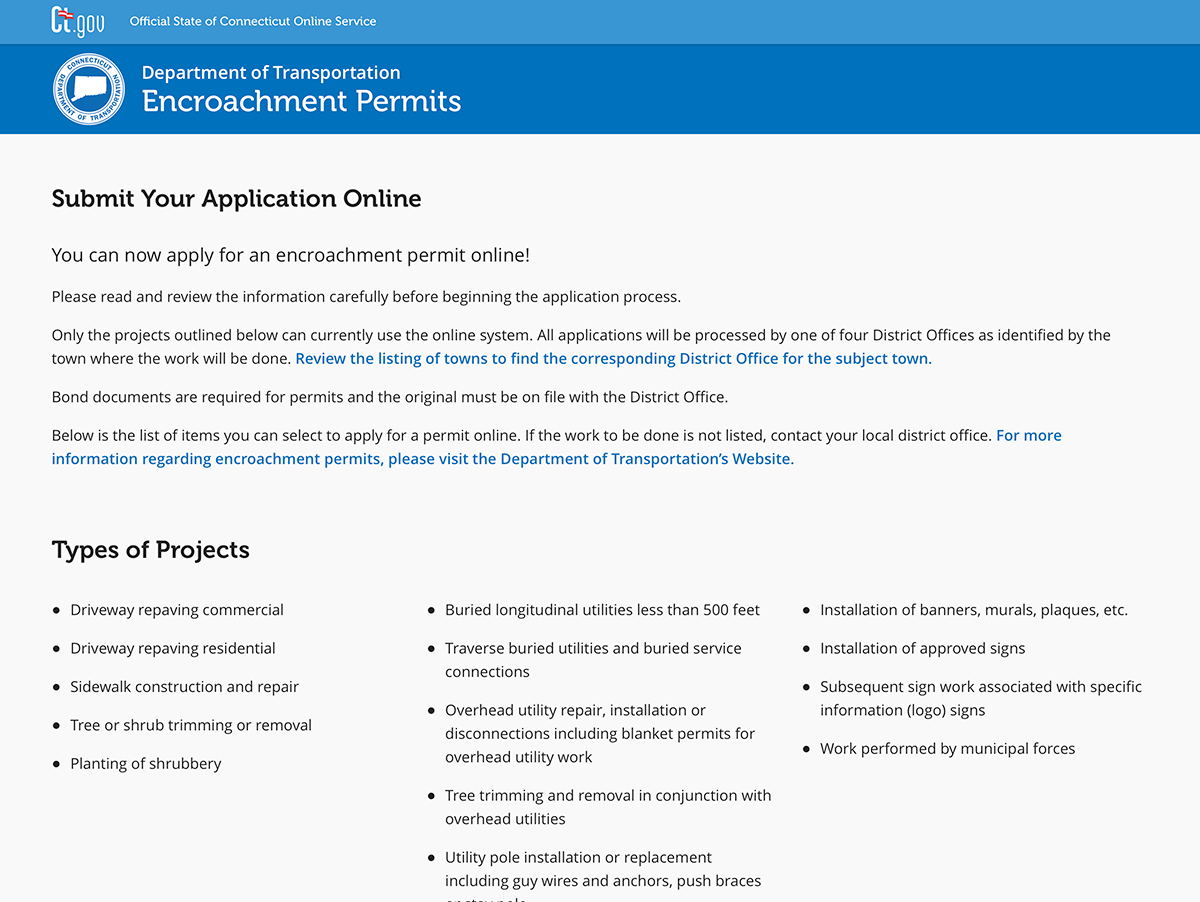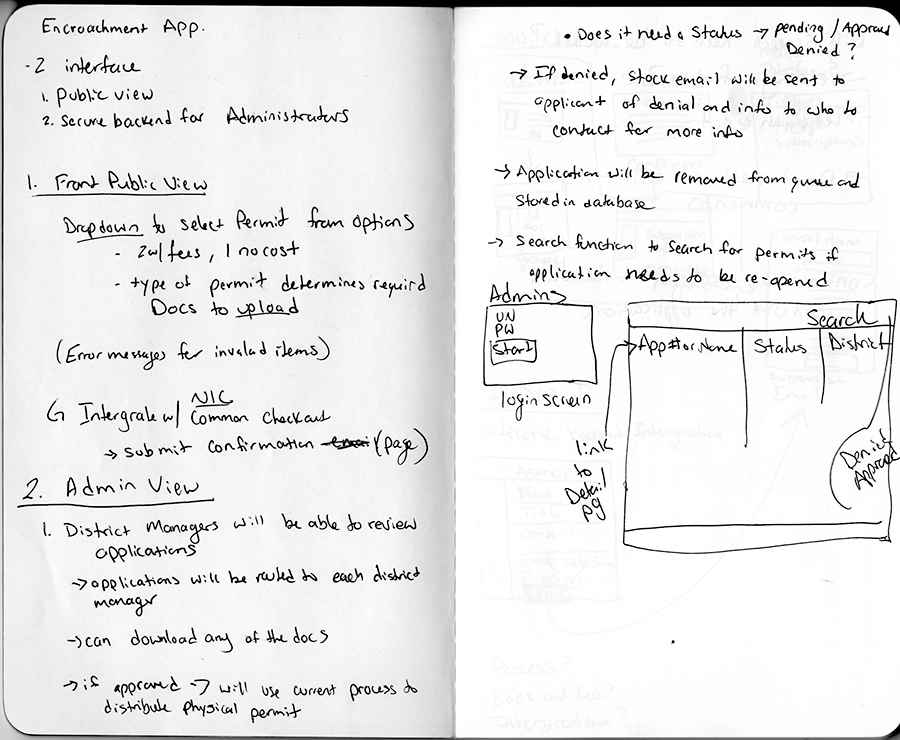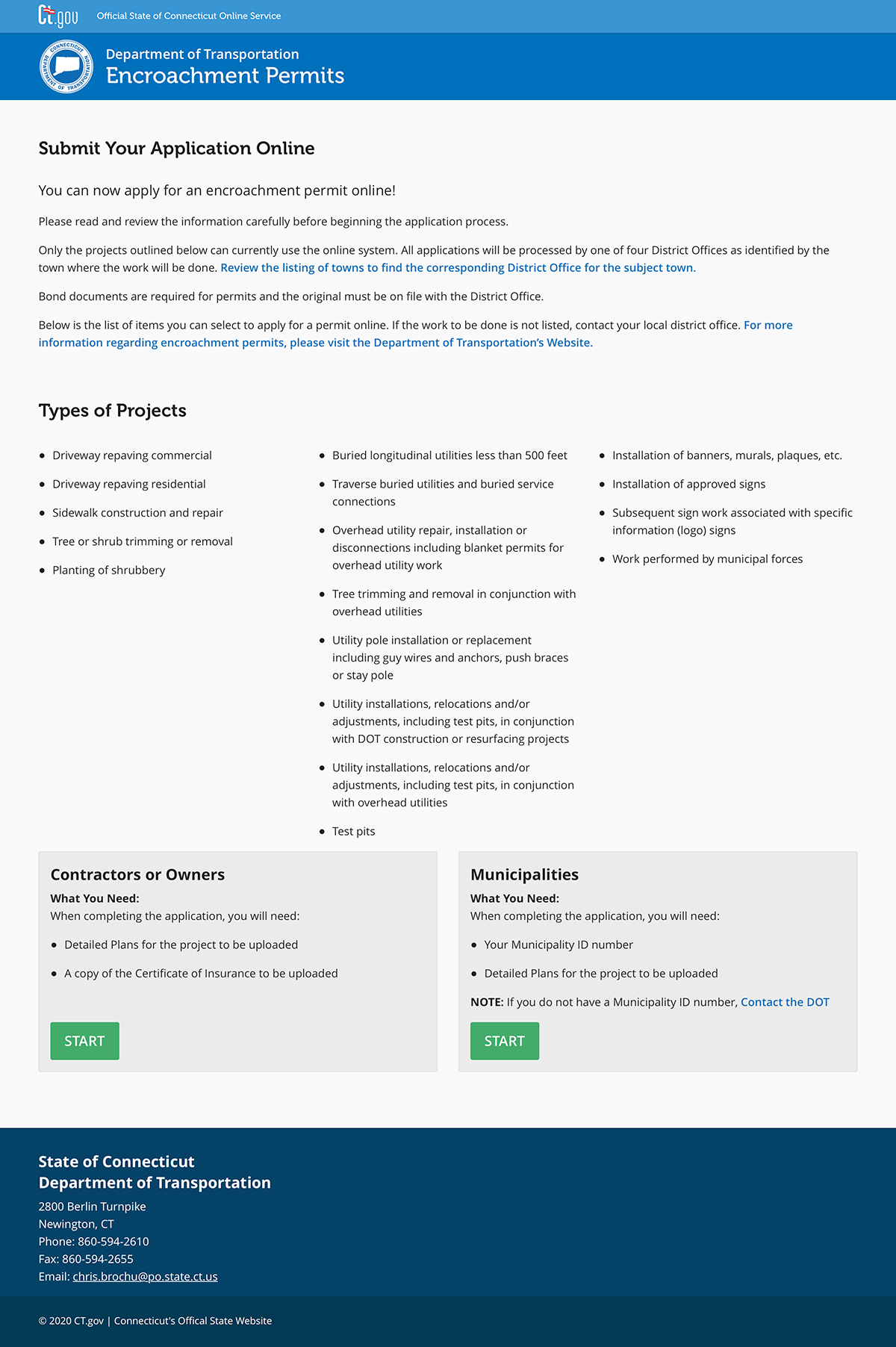
Filling for an encroachment permit was a daunting process. It could only be done in person or by mail. The only form of payment accepted was by check. It would take days or weeks to submit and process the application causing delays in projects.
I was part of a team to reimagine the application process for encroachment permits to drastically improve time and efficiency.
An encroachment permit authorizes work to be done within the state right of way. Examples of this are highways, driveways, grading, fence removal or replacement, surveying, and geotechnical investigation.
On average, the DOT processes 4,500 application approvals per year. This doesn’t include any applications that are denied.
The existing process to acquire an encroachment permit is completely manual. Applications are filled out and dropped off in person or mailed to one of the district locations. Fees are paid by check and non-refundable. Once approved, a physical permit is printed and mailed. The paper-based process was slow and time-consuming for all involved.
We knew there was a more efficient way for applications to be submitted, reviewed, and either approved or denied. The main goal was to take the current paper process and create an online form allowing users to submit applications online. The online application will allow users to apply from anywhere, on any device and pay using a credit card. For Districts, they could easily review each application through an administrative screen and accept or deny the applications in one system.
The benefits of the application are to reduce the overall approval process times for users while decreasing resource hours for Districts. Users benefit from being able to apply and pay online without having to go to a District office or mailing the application in at a later time.
There are there distinct audiences for this application:
I led the design of the application, participated in stakeholder meetings, conducted stakeholder interviews, gathered requirements, identified user flows, and created front-end mockups.
In addition, I collaborated with font-end and back-end developers while building the application.
Early on, I participated in the initial meetings with stakeholders to review the project scope and requirements.
To learn more about the administrative process, I partnered with a local District employee to gain the full vision of how the Districts accept, review, and process the applications.
One of the challenges early on was being limited on our access to users of the application, the contractors and home owners. We had to base the application on the paper form and find a solution for the best way to translate it to an online form based on the requirements.
Once I gathered all the requirements and use cases, I began to sketch out the different user journeys.
Initially, there was going to be only 2 views, one for the public and one for the administrators. We quickly learned that a second public view was needed for the municipalities. Since municipalities required less information as part of the application process, their online form could be streamlined.

Initial Sketches for the project
While outlining the public view of the application, new requirements became apparent. For example, part of the application requires sketches of the area where the work will take place. So we knew the online application needed to have a file upload capability.

Whiteboarding Ideas
Once I had a clear understanding of each process flow, I created wireframes for the two public views of the application and the administrative side.
The wireframes were presented to the stakeholders for feedback.
Though it was a simple paper form, some questions arose.
These were just some of the questions that came up as we were outlining the contractor/home owner flow. To solve these questions, we consulted the stakeholders and District users for input into the process.

Contractor Wireframes
The municipality application was much simpler process. All municipalities were all ready on file with the Districts so contact information wasn’t needed. The municipalities were identified by their municipal ID number. They also didn’t have to pay for the permit so the payment process was also not needed.

Municipal Wireframes
District administrators have secure access to view and manage the applications submitted. Each user had a login which gave them access to the database where all the applications are submitted. They can easily sort the application records by any of the fields and by status. Each application can be viewed as detailed records and the District user could approve, deny or request more information, all from the simple administrative screens.

Administrative Wireframes
We were able to successfully launch the initial release of the project which provided two separate starting points: one for contractors and home owners and the other for municipalities.
Since the launch, we have been gathering user data which has identified areas for improvement. Additional updates and releases are plained for future enhancements.
One enhancement was to include a third avenue for utility companies to apply for the permits. This enhancement would include creating utility company profiles and monthly billing cycles.

Encroachment Permits